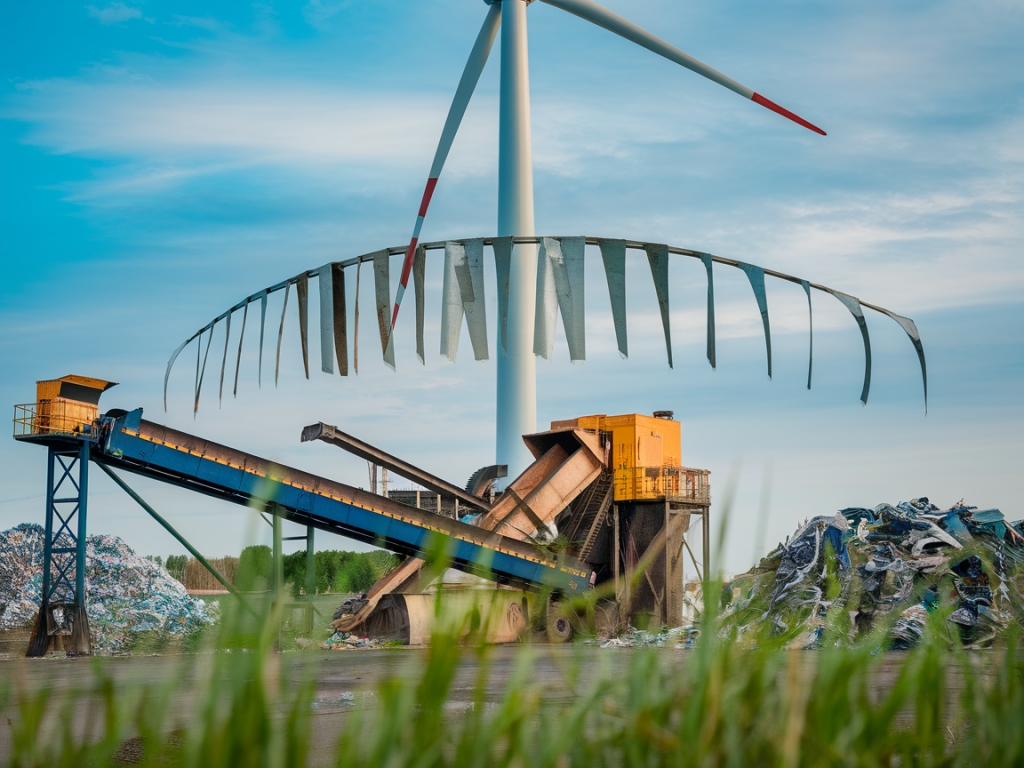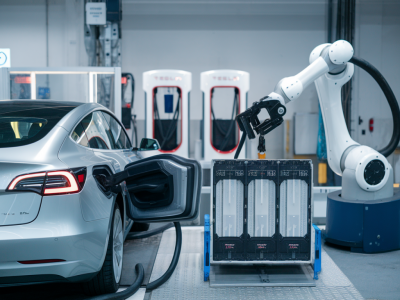
When we think of renewable energy, wind turbines often come to mind as a beacon of sustainability. Towering over vast landscapes, their sleek and futuristic design symbolizes hope for a greener tomorrow. Yet, beneath their eco-friendly exterior lies a pressing challenge that few people know about: how do we responsibly manage the waste generated by wind turbine blades at the end of their lifecycle?
This question has haunted the renewable energy industry for years. While wind turbines themselves contribute significantly to a reduction in carbon emissions, their blades present a unique problem. Manufacturing them requires composite materials like fiberglass and carbon fiber, which are incredibly durable but notoriously difficult to recycle. With the global demand for wind energy skyrocketing, we’re also facing a growing pile of retired blades—a conundrum that demands both immediate and innovative solutions.
Why Are Wind Turbine Blades So Hard to Recycle?
Wind turbine blades are engineering marvels. They’re designed to withstand extreme conditions—fierce winds, rain, hail, and even lightning—for decades. This durability is made possible by the very materials that complicate their end-of-life recycling.
Fiberglass and carbon fiber composites are essentially a mix of reinforced fibers and resin. This combination makes them lightweight yet strong, perfect for efficient energy production. However, unlike materials such as aluminum or steel, composites cannot be easily melted down and reused. Traditional recycling methods either fail outright or require so much energy that they negate the environmental benefits of recycling. The end result? Many retired blades end up in landfills, taking up space and contributing to long-term waste issues.
Breaking Down the Scale of the Problem
To put things into perspective, the Global Wind Energy Council predicts that tens of thousands of wind turbine blades will reach the end of their life in the next two decades. The sheer scale is staggering, with some estimates suggesting that the industry could produce over two million tons of blade waste worldwide by 2050.
In Europe alone, more than 3,800 blades are expected to be decommissioned annually by 2025. The United States faces a similar dilemma, with many states grappling with how to manage these massive structures that don't fit the mold of conventional recycling systems. Clearly, this has become an industry-wide issue that demands transformative action.
Innovative Solutions on the Horizon
Given the challenges, you might wonder if there’s light at the end of the tunnel. The good news is that scientists, engineers, and industry leaders are stepping up to tackle the issue head-on. Let’s take a look at some of the most promising approaches to recycling wind turbine blades:
- Chemical Recycling: Advanced chemical processes are being developed to break down the composite materials in blades into their basic components. Companies like Aditya Birla Chemicals have been experimenting with solvent-based methods to recover valuable fibers and resins, making them reusable for new applications.
- Mechanical Recycling: Some firms are crushing old blades into smaller fragments that can be repurposed as raw materials. For example, these recycled materials could go into making cement, a sector that’s also looking for ways to cut its carbon footprint.
- Repurposing and Upcycling: An increasingly popular solution involves repurposing blades for entirely new uses. Picture this: massive wind turbine blades turned into pedestrian bridges, playground equipment, or even stylish urban furniture. A Danish company called Re-Wind Network is making waves with these creative transformations.
- Thermal Recycling: Through a process called pyrolysis, blades are heated to high temperatures in the absence of oxygen. This separates the resin from the fibers, offering a potential pathway for large-scale recycling.
These solutions are promising, but they’re not yet widespread. Scaling them globally will require significant investment, research, and collaboration across industries.
The Role of Policy and Collaboration
Beyond technology, we need supportive policies to accelerate the transition to sustainable blade recycling. Governments can play a critical role by introducing legislation that mandates recycling plans for turbine manufacturers and wind farm operators. For instance, the European Union is already working on stricter waste management regulations to address this concern industry-wide.
At the same time, collaborations between manufacturers, recyclers, and policymakers are crucial. Major wind turbine producers such as Vestas have committed to creating “fully recyclable” turbine models in the near future. Partnerships like these signal that the industry is taking responsibility, though there's still much ground to cover.
Why Tackling Turbine Waste Matters
Addressing the waste problem isn’t just about optics or industry reputation. It’s fundamentally about staying true to the principles of sustainability. If renewable energy is to lead the way in combating climate change, we must ensure that its lifecycle—from production to decommissioning—is environmentally responsible.
Moreover, solving this issue could unlock new economic opportunities. Think of all the jobs that could emerge in recycling infrastructure, innovative design, and manufacturing. A circular economy for wind turbine materials would not only reduce environmental harm but also contribute to local and global economies.
What Can You Do?
While this might seem like a challenge best left to engineers, policymakers, and large corporations, individual actions matter too. Here are a few ways you can contribute to addressing the issue:
- Advocate for Change: Support policies and companies that prioritize sustainable practices in renewable energy.
- Stay Informed: Keep up with developments in wind energy and recycling through platforms like Energy News.
- Promote Awareness: Share articles, stories, and resources to help others understand this emerging issue. Public awareness can drive industry action faster than you might think.
As I continue to research and write about these topics, I’m hopeful that renewable energy will live up to its full potential without leaving a trail of waste behind. The journey to a greener tomorrow includes acknowledging and addressing the challenges we face today. And with innovative solutions on the horizon, perhaps the story of recycled wind turbine blades will turn out to be a success story that sets a powerful example for other industries.

